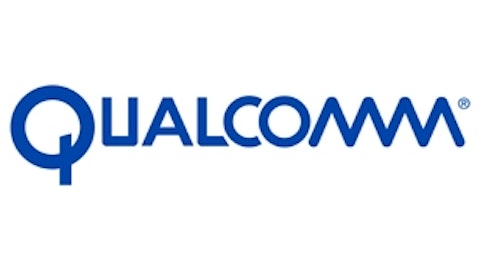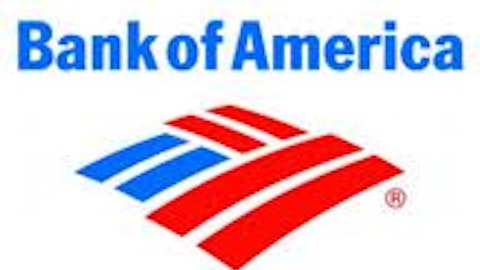Ask any investor to name key ratios and metrics for evaluating a bank, and you’ll probably find net interest margin on his or her list.
Net interest margin, or NIM, takes the money a bank earns in interest from its loans and investments, subtracts the interest it pays out on its deposits, and divides the result by its total earning assets. NIM gauges how well a bank is doing its core job: turning the money from its customers’ deposits into profitable mortgage, auto, and commercial loans.
While it’s effective at measuring one bank’s performance, NIM may not be as reliable a metric as your old finance textbooks might have led you to believe when comparing one bank with another. How much a bank can earn also depends largely on what kinds of assets it holds, and in what proportions.
Net interest margin trends
Banks have often recently claimed that low interest rates have hurt their net interest margin by preventing them from charging higher rates on loans. Yet somewhat surprisingly, as interest rates have risen, banks have seen their NIMs decrease.

Source: St. Louis Federal Reserve.
However, investors should note that bank’s liabilities (deposits) are short-term and their assets (loans) are long-term. As rates rise in the short term, they must pay more for short-term borrowing and to depositors. But in the long run, they’ll make more interest (and thus, money) from the loans they’ve written at higher rates.
So with all of that in mind, let’s dive in to a quick check of five banks’ net interest margins in the most recent quarter to see whether we can spot any examples of why you can’t rely exclusively on NIM to gauge a bank’s performance.
| Bank | Net Interest Margin |
|---|---|
| Wells Fargo & Co (NYSE:WFC) | 3.46% |
| SunTrust Banks, Inc. (NYSE:STI) | 3.25% |
| U.S. Bancorp (NYSE:USB) | 3.43% |
| PNC Financial Services (NYSE:PNC) | 3.58% |
| Capital One Financial Corp. (NYSE:COF) | 6.83% |
Source: Company SEC filings.
Wait a second. Capital One Financial Corp. (NYSE:COF) is the 13th largest bank holding company by assets, yet it somehow managed to double its peers’ net interest margin in the most recent quarter? Upon further digging, the data shows that while every bank reports a number called “net interest margin” in every earnings release, its composition isn’t uniform at all.
Think of net interest margin as a meat loaf. While everyone may call what they pull out of the oven “meat loaf,” the ingredients and amounts can vary dramatically from one recipe to the next. In that same way, many factors determine what a bank’s net interest margin will be, so it is important to see exactly how each bank “prepares its meat loaf.”
While Capital One Financial Corp. (NYSE:COF) has slowly begun its transformation into a more traditional bank over the last year, notice how the composition of its earning assets differs from its peers’:
Composition of Earning Assets by Business (FY 2012)
| Wells Fargo | Sun Trust | US Bancorp | PNC | Capital One | |
|---|---|---|---|---|---|
| Credit Card | 2% | <1%% | 5% | 2% | 31% |
| Consumer Banking | 39% | 43% | 29% | 29% | 28% |
| Commercial Bank | 34% | 37% | 32% | 42% | 14% |
| Investment Securities | 25% | 15% | 26% | 25% | 23% |
| Other | 0% | 5% | 8% | 3% | 4% |
Source: Company 10-Ks.
Capital One Financial Corp. (NYSE:COF)’s asset composition is radically different from other banks of a relatively similar size. Knowing that each business within a bank has a different yield based on the risk associated with it, one would expect that Capital One has a higher net interest margin than peers such as SunTrust Banks, Inc. (NYSE:STI), U.S. Bancorp (NYSE:USB), and PNC Financial Services (NYSE:PNC), which all have greater than 60% of their assets in their consumer and commercial banking operations, which are often safer and lower yielding than the riskier, higher-margin credit card debt that’s at the forefront of Capital One’s portfolio.
A fairer comparison would be to view the yield associated with each business, since all of the banks are composed differently:
Yield of Earning Assets by Business (FY 2012)
| Wells Fargo | Sun Trust | US Bancorp | PNC | Capital One | |
|---|---|---|---|---|---|
| Credit Card | 12.7% | 10.1% | 10.2% | — | 14.3% |
| Consumer Banking | 4.8% | 3.9% | 4.9% | 4.8% | 6.3% |
| Commercial Bank | 4.1% | 4.5% | 3.9% | 4.7% | 4.3% |
| Investment Securities | 4% | 3% | 2.8% | 3.4% | 2.3% |
| Other | 4.7% | 2.4% | 4.5% | 3.5% | 1% |
Source: Company 10-Ks. PNC Financial Services (NYSE:PNC) does not disclose credit card portfolio yield.
Even here, Capital One Financial Corp. (NYSE:COF) has the highest yield in both its credit card and consumer banking business. Yet the disparity between its credit card margins and those of its peers is not two times as great, as we would have been led to previously believe. Vetting these large differences is crucial because “understanding what makes up a bank’s asset-base is one of the most important things a bank investor can do,” says David Hanson, banking analyst and author of the Fool’s new report on finding great banks stocks.
When you’re making an investment decision about a company, remember that not all metrics are created equal, and that you shouldn’t view them in isolation. Instead of relying solely on the data a company gives you, consider the entire story behind the underlying metric itself. While Capital One has great meat loaf, it can’t all be attributed to the cook. The mix of its ingredients sure helped, too.
The article The Reason Behind 1 Bank’s Massive Margins originally appeared on Fool.com and is written by Patrick Morris.
Patrick Morris owns shares of US Bancorp. The Motley Fool recommends Wells Fargo and (NYSE:WFC) owns shares of PNC Financial Services (NYSE:PNC) and Wells Fargo.
Copyright © 1995 – 2013 The Motley Fool, LLC. All rights reserved. The Motley Fool has a disclosure policy.





